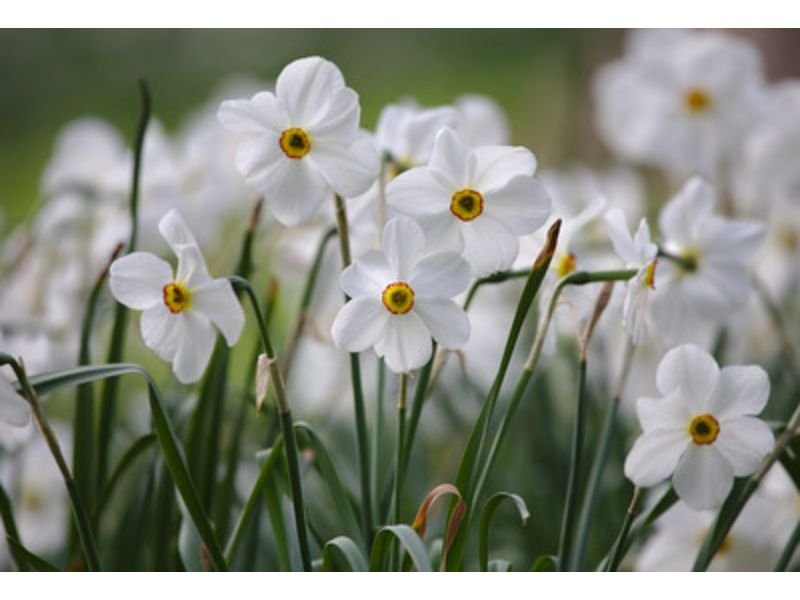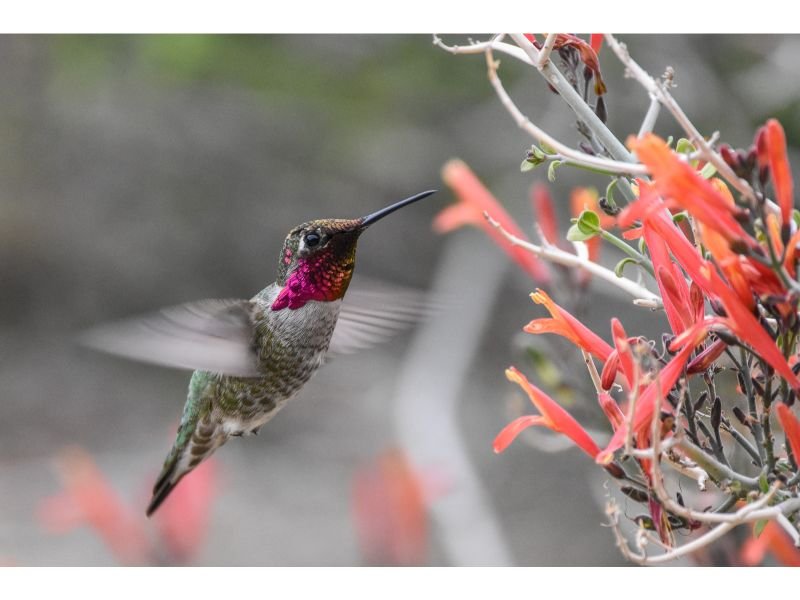Table of Contents
Techniques to Get an Anemone Flower to Fully Open
Anemone flowers are prized for their beautiful blooms and make a great addition to any garden. However, sometimes these flowers may struggle to fully open, leaving gardeners feeling frustrated and disappointed. Fortunately, there are a few techniques that can be employed to help get an Anemone flower to fully open.
A. Adding Ice Cubes or Cold Water at the Base of the Plant
Anemones are responsive to changes in temperature, and adding ice cubes or cold water to the base of the plant can help stimulate blooming. This works because the sudden drop in temperature tricks the plant into thinking it is spring, which is when Anemones typically bloom. To do this, simply add a few ice cubes or a splash of cold water to the soil around the base of the plant.
While adding ice cubes or cold water to the base of Anemone plants is an uncommon technique for stimulating blooming, it’s important to note that results may vary and there is no guarantee that this will work for all Anemone plants. Additionally, there could be potential disadvantages to this method, such as causing root damage if the soil is not well-draining or if the water is too cold.

To mitigate the potential dangers of using ice cubes or cold water to stimulate Anemone blooming, there are a few steps that you can take:
- Use well-draining soil: Make sure that the soil in the pot or garden bed is well-draining so that the roots are not standing in water. This will help prevent root damage from the sudden change in temperature.
- Gradually acclimate the plants: Gradually acclimate the Anemones to the colder temperature by gradually decreasing the temperature of the water over a period of a few days, rather than applying a sudden change in temperature.
- Monitor the temperature: Monitor the water or soil temperature and ensure that it is not too cold, as extreme cold can harm the roots.
- Limit the frequency: Limit the frequency of adding ice cubes or cold water to the base of the plant to once a week or less, as applying this technique too often can lead to damage to the roots and other parts of the plant.
By following these steps, you can help minimize the potential dangers of using ice cubes or cold water to stimulate Anemone blooming. Remember always to research the specific needs of your Anemone plants and consult with a horticulturist or other expert if you have any questions or concerns.
B. Placing a Plastic Bag over The Blossom
Placing a plastic bag over the blossom can help to trap moisture and create a greenhouse-like environment, which can help Anemones to fully open. To do this, simply place a plastic bag over the blossom, and secure it so that it doesn’t fall off. This will help to maintain a high level of humidity around the bloom, which can encourage it to open fully.
C. Trimming Leaves and Stems from Around The Bloom
Removing leaves and stems around the bloom can help improve air circulation, which can help Anemones to open fully. This is because the increased airflow will help to prevent the buildup of moisture and heat, which can cause blooms to remain closed. To do this, simply trim away any leaves or stems growing close to the blossom, being careful not to damage the plant itself. By following these techniques, you can help to encourage your Anemones to fully open and provide a beautiful display in your garden.
Preparing Your Anemones for Bloom

To ensure that your Anemones bloom to their full potential, it’s important to provide them with the proper care and preparation. In this section, we will discuss how to select the right potting soil, provide adequate water and sunlight, and give your Anemone flowers the care they need to thrive.
Selecting the Proper Potting Soil
Anemone flowers need well-drained, moist soil in order to thrive. When selecting potting soil, it is crucial to choose a mixture that is specifically formulated for perennials and contains organic matter to help retain moisture. If you are planting Anemones in the ground, be sure to amend the soil with compost or other organic matter to improve its structure and fertility.
Ensuring Adequate Water and Sunlight
Anemones need consistent watering in order to grow and bloom. They should be watered regularly, especially during periods of drought or hot weather, to prevent the soil from becoming too dry. Additionally, Anemones prefer dappled shade, so it is important to protect them from strong sunlight, especially during the hottest parts of the day.
Giving Anemone Flowers Proper Care
Proper care is essential for keeping Anemones healthy and blooming. This includes regularly removing dead leaves and spent blooms, applying mulch to conserve moisture and regulate soil temperature, and fertilizing regularly with a balanced fertilizer to promote healthy growth. Additionally, it is important to avoid overcrowding the plants, as this can lead to disease problems.
Understanding Anemone Flowers
A. Types of Anemone Flowers
| Species | Bloom Season | Blooming Period (weeks) | Flower Color |
|---|---|---|---|
| Anemone coronaria | Late spring/early summer | 6-8 | Red, pink, white, blue, purple |
| Anemone japonica | Late summer/early fall | 4-6 | Pink, red, and white |
| Anemone hupehensis | Late summer/early fall | 4-6 | Pink, white, purple |
| Anemone x hybrida | Late spring/early summer | 6-8 | Red, pink, white, blue |
| Anemone blanda | Early spring | 4-6 | Blue, white, and pink |
| Anemone ranunculoides | Early to mid-spring | 4-6 | Yellow, white |
| Anemone sylvestris | Early to mid-spring | 4-6 | White, blue |
| Anemone tomentose | Late summer/early fall | 4-6 | Pink, red |
There are many different species of Anemone flowers, but the most common ones include Japanese Anemones, Wood Anemones, and Pasque Flowers. Each species has its own unique set of characteristics, including different blooming times, flower colors, and growth habits. When selecting Anemone flowers for your garden, it is important to choose the right species for your specific growing conditions and preferences.
B. Growth Requirements
Anemone flowers are relatively easy to care for, but they do have certain growth requirements that must be met in order to thrive. They prefer well-drained, moist soil and a location that provides dappled shade. Additionally, they require consistent watering, especially during the growing season, and should be protected from strong winds and harsh sunlight.
C. Life Cycle of Anemone Flowers

Anemone flowers typically bloom in the spring or summer, and their life cycle begins with the appearance of leaves in early spring. As the weather warms, the flowers will start to emerge and bloom, providing a stunning display of color. After blooming, the plant will enter a dormant period and the leaves will die back.
The plant will begin to grow in the fall, and the cycle will repeat itself in the spring. Understanding the life cycle of Anemone flowers can help you properly care for them and ensure that they continue to bloom and flourish in your garden.
Conclusion
Summary Of Tips For Getting Anemone Flowers To Open
In order to get Anemone flowers to fully open, it is essential to select the proper potting soil, ensure adequate water and sunlight, and give the flowers proper care. Additionally, techniques such as adding ice cubes or cold water to the base of the plant, placing a plastic bag over the blossom, and trimming leaves and stems from around the bloom can help to encourage Anemones to open.
Importance of Proper Care for Anemone Flowers
Proper care is essential for keeping Anemones healthy and blooming. This includes regularly removing dead leaves and spent blooms, applying mulch, fertilizing regularly, and avoiding overcrowding. By giving Anemones proper care, you can help ensure that they continue to bloom and provide a beautiful display in your garden.
Final Thoughts
Anemones are beautiful flowers that can add color and interest to any garden. By understanding their growth requirements and using the techniques outlined in this article, you can help to ensure that your Anemones bloom to their full potential. So why not try these tips and see for yourself just how stunning Anemone flowers can be.

Gardening is my passion and growing plants indoors has always been a stress relief for me. Grow a banana tree in my apartment once (although failed to produce bananas).






